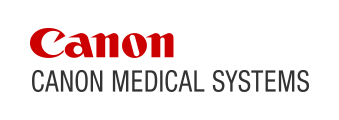News | Press Releases
January 6, 2015
NON-CONTRAST RENAL MRA IS AN ACCURATE METHOD FOR DETECTING RENAL ARTERY STENOSIS: FINDINGS FROM A FIRST OF ITS KIND INTERNATIONAL NON-CONTRAST MRA MULTI-CENTER TRIAL RECENTLY PUBLISHED IN AJR (AMERICAN JOURNAL OF ROENTGENOLOGY)
Otawara, Japan, January 6, 2015 - In 2006, the Food and Drug Administration (FDA) released a public health advisory warning of the risk of developing nephrogenic systemic fibrosis (NSF) associated with the use of all gadolinium-containing contrast agents in patients with end stage renal disease or acute renal failure, as well as patients with chronic kidney disease. Currently, there is no effective treatment for NSF, so prevention is essential to avoid this devastating disease. Because NSF has shattered the safety reputation of gadolinium-containing contrast agents which have been systematically used for MR angiography (MRA), non-contrast enhanced MRA techniques have attracted widespread interest.
In order to validate the usefulness of non-contrast enhanced MRA as a diagnostic tool for renal artery stenosis, Toshiba Medical Systems sponsored an international multi-center trial "REACT" (REnal Artery Contrast-free Trial) enrolling and evaluating 75 patients in collaboration with seven centers*1 in five countries: the United States, Spain, China, France, and Japan. All subjects underwent medically required non-contrast renal MRA*2 exams (performed using both the 1.5-T EXCELART Vantage™ powered by Atlas and Vantage Titan™ systems) as well as CT angiography for the evaluation of renal artery stenosis. The study was successful in evaluating the clinical usefulness of non-contrast renal MRA and also validated Time-SLIP as a robust technique for non-contrast imaging, with results demonstrating the high sensitivity, specificity, and diagnostic accuracy of Time-SLIP while also showing no statistical differences between non-contrast MRA and CTA in terms of the ability to diagnose renal artery stenosis.
A total of 75 patients (age: 58±13 years (mean±SD), 41 (55%) male) completed all imaging exams. The patient-based diagnostic accuracy of MRA for detecting renal artery stenosis was 0.90, with CTA used as the reference standard. The sensitivity was 0.74 and the specificity was 0.93. These promising overall results indicate that non-contrast MRA is an accurate method for determining the presence or absence of significant renal artery stenosis (defined as stenosis >50%) in comparison to the "gold standard" CTA in an ethnically and geographically diverse population, with the image quality of MRA scored as "good" or "excellent" in 96% of cases. These results were presented at the European Congress of Radiology in Vienna, Austria, on March 7th, 2013 by Dr. Timothy Albert, who is director of the Cardiovascular Diagnostic Center and who served as the principal investigator of this multi-center trial.
We are pleased to announce that the result of REACT study has been published in AJR (American Journal of Roentgenology) January 2015, Volume 204, Number 1. This article shows that Time-SLIP is a robust technique for non-contrast vascular imaging, eliminating the need for gadolinium-based contrast agents while providing an accurate and non-invasive method for diagnosing patients with a high degree of confidence.
"REACT is a first of its kind multi center, international, non-contrast vascular imaging trial. It exemplifies the longterm commitment that Toshiba has to not only developing novel imaging solutions, but providing clinical evidence to support them. REACT shows that Time-SLIP imaging can be user friendly and applied to different patient groups. It works in diverse population from Asia, to Europe and the US." said Dr. Albert.
"Toshiba's corporate philosophy is "Made for Life™" and it is one of our missions to minimize patient risk while providing exceptional images for their best possible medical treatment." explained Toshio Takiguchi, President of Toshiba Medical Systems Corporation. "The REACT study has proved that it is now possible to detect renal artery stenosis without using contrast agents. Time-SLIP eliminates the need for gadolinium-based contrast agents, which results in safer and more comfortable examinations. Not only do these non-invasive and painless techniques eliminate the risks associated with gadolinium-based contrast agents, but they also require less set-up time for clinicians, resulting in MR exams that are more comfortable for the patient and can be completed more quickly without compromising image quality.," said Takiguchi.
*1:, Advanced Diagnostic Imaging Center (USA), University of Tokyo (Japan), Imagerie Médicale du Bois de Verrières (France), Fundació Puigvert (Spain), Centros Médicos Creu Blanca (Spain), Peking Union Medical College Hospital (China), University of Texas Health Science Center at San Antonio (USA),
*2: To improve imaging safety for all patients, including those with kidney issues, Toshiba Medical Systems has developed advanced non-contrast MRA techniques that allow certain MRA exams to be performed without contrast agents. The Time-SLIP non-contrast MRA technique can be applied to many regions of the body and is useful for evaluating the hemodynamic cycle, for functional assessments, and for visualizing vascular structures. It reveals regions that are excited as bright or black blood and can be especially useful for imaging complex vessels running in multiple directions, such as the renal arteries, portal venous system, and pulmonary arteries. Time-SLIP technique is available for all Toshiba MRI systems.
About Toshiba Medical Systems Corporation
Toshiba Medical Systems Corporation is a leading worldwide provider of medical diagnostic imaging systems and comprehensive medical solutions, such as CT, X-ray and vascular, ultrasound, nuclear medicine, and MRI systems, as well as information systems for medical institutions. Toshiba Medical Systems Corporation has been providing medical products for over 80 years. Toshiba Medical Systems Corporation is a wholly-owned subsidiary of Toshiba. Visit Toshiba Medical Systems Corporation's web site at http://www.toshibamedicalsystems.com/.
EXCELART Vantage, Vantage Titan and Made for Life are trademarks of Toshiba Medical Systems Corporation.




